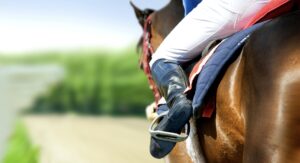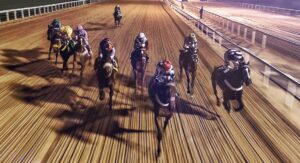Factors Affecting a Horse’s Performance
When analysing a horse race it is important to take into consideration all of the ‘external’ factors such as draw, pace, trainer behaviour and sire statistics etc. Whilst these factors can all have a bearing how a runner acts under certain conditions, ultimately each animal has its own traits and preferences that can determine how close to optimal form the horse performs.
In this article, we discuss how headgear, days since last run, time of year, running style, and ground and distance can affect a horse’s performance.
Headgear
Headgear is applied for a variety of reasons, but most commonly, it is used to help the horses concentrate. There is a range of apparatus that can be applied, and each piece of equipment is designed with a slightly different purpose in mind.
The most common forms of headgear are:
- Blinkers
- Visors
- Cheekpieces
- Eye shield
- Tongue tie
Headgear can sometimes have a substantial effect on a runner’s performance. Transformations in levels of form are not uncommon and those horses who are sporting first time headgear, or are having previously used apparatus reapplied, should always be scrutinised.
Some handlers are adept at knowing when their runners will benefit from some extra assistance, whilst others use headgear as a last resort. Similarly, some sires are more prone to showing quirks or an attitude, which can be quelled with the assistance of blinkers, visors, or cheek pieces etc.
Example: Picansort
Peter Crate’s runner is a perfect example of a horse who benefits from the application of headgear.
- In headgear – is 8/37 (22%) for £6 LSP, with expected wins just 5. He has a further 10 places.
- Without headgear – 0/16 (expected winners two), with five places.
Picansort won in both first time blinkers and the first time visor, and these are the two pieces of equipment the son of Piccolo seems to react best to. Having this knowledge to hand, enthusiasm to back Picansort would be tempered if he were not sporting headgear.
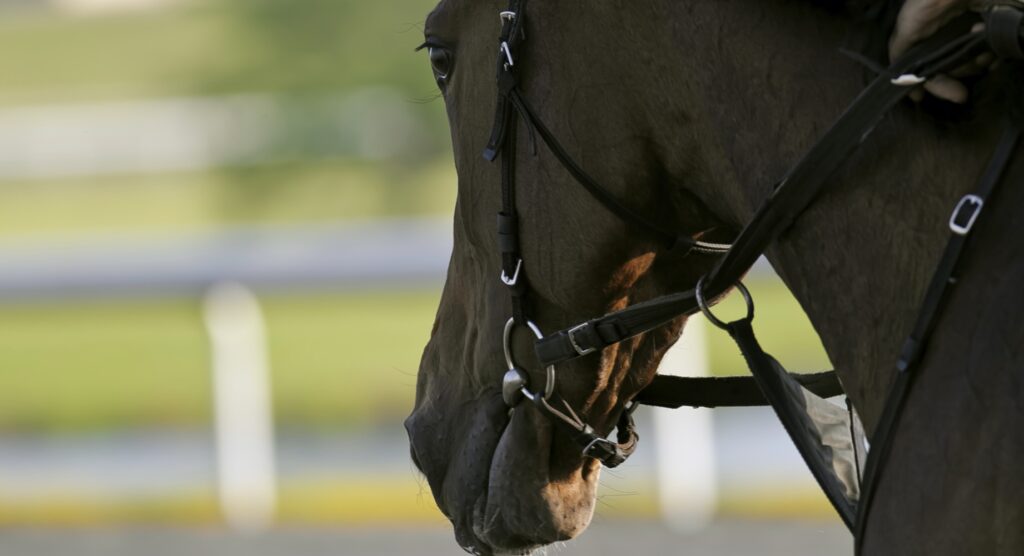
Days Since Last Run
Often, horses exhibit trends in their form based upon how recently they have run. Again these patterns can coincide with trainer methodology and external factors such as draw and pace, but it is always useful to review how a horse has performed after a particular absence.
Some runners go best fresh when they haven’t seen a racecourse for a while, and others hit top form after a recent run -enabling them to achieve optimal fitness.
Example – Brown Pete
A horse who gained notoriety when landing a big gamble at Wolverhampton after his fellow stable mates managed to fail to make it to the track – and a horse, who by in large, has displayed a clear tendency for a certain period of time off the track.
- When Brown Pete is off for 1-7 days – his record is 5/25 (20%) for £19 LSP. Expected wins 3
- Off for over a week – he is just 1/43 (2%) for a loss of £-40. Expected winners 3.5
The horse clearly goes better when in form and turned out quickly – only win when off the course for more than 7 days was the famous Wolverhampton gamble.
Example – Miami Gator
Karl Burke’s 7yo shows that is it not always as cut and dried as horses liking to return very quickly, or likely to come back after a long break. This horse has the following record:
- When returning within 2-4 weeks of last race – he is an impressive 8/22 (36%) for £51 LSP.
- Any other break – the horse is 3/35, for a loss of £-24.50.
When off for 2-4 weeks, expected wins were just 3, so the horse really outperforms his price, producing a big profit in the process. His performances and win % is still respectable when off for other breaks, but the horse appears to thrive off having a fairly recent run to get him fit, and then enough of a break to recover.
Checking how a horse performs after a particular absence from the track can be very enlightening as to its chances in a race.
This would not be as significant as if the horse had been short in the market on several occasions and had an expected number of wins based on odds of 3, for instance.
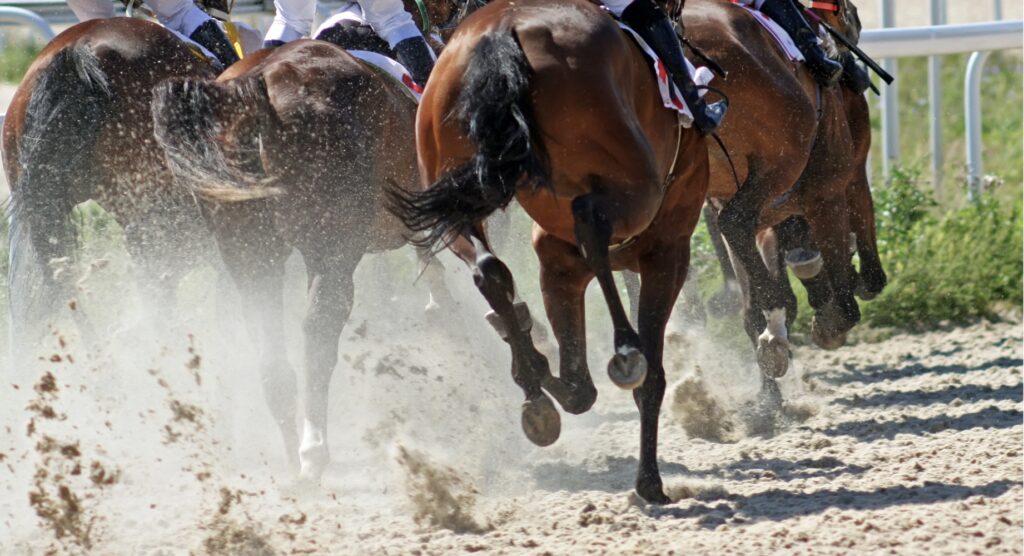
Time of Year
Scrutinising horses’ performance by the month and/or season can be a fruitful activity. A demonstrable bias towards running well at certain times of the year can be often witnessed when pouring through a runners form.
Peaking at particular times can be a consequence of individual training plans, ground preferences, or physical condition at different times of the year.
From a physical perspective, horses can flourish at different times of the year. Some can come to hand early and perform best in spring, whilst others need plenty of work and the sun on their back, showing their best form in the latter parts of the season.
Example: Lastkingofscotland
Lastkingofscotland represents a horse who has a clear preference for a particular time of year. Conor Dore’s inmate does much better at the start of the year, than at any other time:
- Between January – April: 11/38 (29%) for £18 LSP, with expected wins based on odds just 6
- Between May – December: 3/67 (3%) for loss of £-54, with expected winners 8
This horse has raced 84 times on the All Weather, winning 10 times.
On the turf, the horse has raced 21 times, winning 3 races. This obviously indicates a trainer preference to running on the AW surface, but the win percentage for the artificial surface and turf are similar. During December – March, the All Weather season takes place, offering flat racing to compliment the National Hunt fare.
It is conceivable that trainer Conor Dore gets the horse to peak at around the start of the year to be as successful as possible in the perhaps less competitive racing that is held over winter into early spring.
With such a contrasting strike-rate at different times of the year, the prudent approach would be to only consider Lastkingofscotland from a backing perspective at the start of the year.
Running Style
Race horses have personalities of their own. Much like humans, there are a wide variety of characters in the equine world. Some runners thrive off a battle, whilst others prefer to have an easy ride and curl up when faced with a sustained duel. One horse may like to bully their field leading from stalls to the finishing post, and others may get lonely in-front, performing better coming through runners to lead late in the day.
In addition to personalities dictating running style, a horses attributes can also have an impact on the way that it is ridden.
Runners who possess a sharp turn of foot and instant acceleration, are typically held up towards the back in their races. Conserving energy early, they can utilise their fast burst to best effect at the end of the race.
Here, we look at the running style of Kuanyao.
Example – Kuanyao
Lee Carter’s 8 year old gelding illustrates the importance of some runners obtaining their favoured running style in a contest, in order for them to produce top form. Looking at Kuanyao’s record we can see:
- When leading early – the horse is 9/21 (43%) for a £21 LSP
- When failing to get to the front early – strikerate drops to just 2/31 for a loss of £-21
Kuanyao is quite simply a different animal when getting his head in front at the start of the race. He has won 9 races, when the expected number of wins based on odds was just 4. It appears to be a psychological issue with this horse, as the wins have come over a variety of trips – he just thrives off being in charge.
A betting strategy can be devised based upon Kuanyao’s requirements to lead.
Using running styles can be an excellent way of framing a race – working out which horses will do what, and how each runner performs when they get their preferred position, and how they do when they don’t.
Using past performance and by considering all of the possible scenarios, it is easier to obtain a more informed picture of a how a contest will unfold, and betting strategies can be tailored around the information.
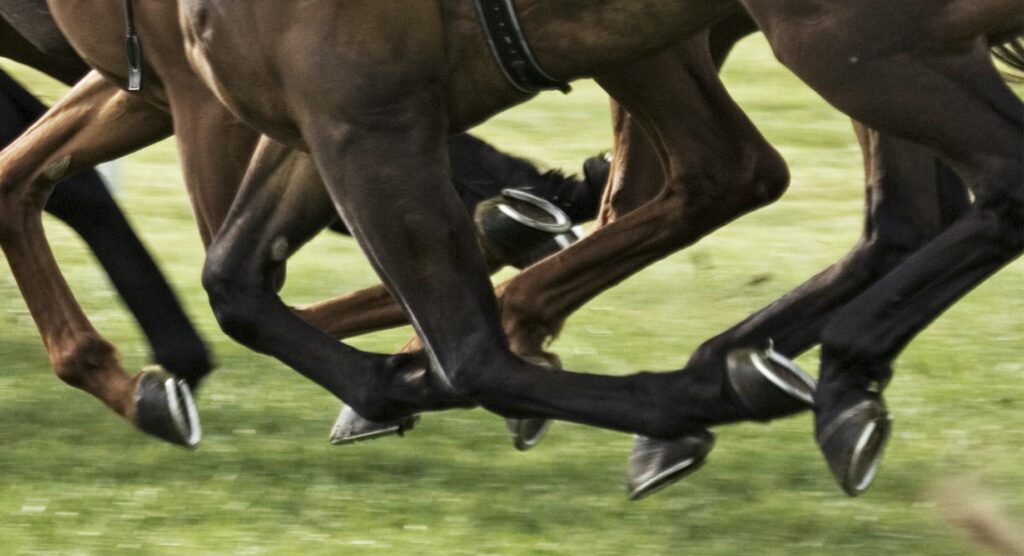
Ground & Distance
Breeding is often a strong indicator of the surface and distance that a horse is likely to favour, however there are some runners whose preferences do not conform to their sire’s preferred conditions.
More experienced handicappers will tend to exhibit identifiable biases to particular conditions, which may or may not conform to the norm for their sire. Either way, the state of the ground and the distance a horse is running over can influence its performance.
Below we look at the horse Star Links:
Example – Star Links
This Irish performer has shown a clear preference for a particular going and distance. First, by looking at the ground stats, we can see:
- Turf – 3/54 (6%) for loss of £-13. A/E 0.82
- AW – 9/26 (35%) for £42 LSP. A/E 2.86
Star Links clearly act better on AW, winning 3 times the number of races he should do on the artificial surface. Next we take a look at his distance bias:
- Under 8f: 1/21 (5%) for loss of £-9. A/E 0.58
- 8f+: 11/59 (19%) for £38 LSP. A/E 2.16
When running at 6 and 7f, the horse has performed poorly. However, when running over further, he has excelled. His best distance appears to be at around 8f, where he is 9/39. We can use this data to our advantage.
For example, Star Links may have won last time out on the AW over 8.5f at Wolverhampton, and is returning to 7f on the turf. He may be seen as a strong contender based upon recent form, but by analysing his preferences, we can see that he is very unlikely to replicate that level on the turf, over an inadequate trip.
Final Thoughts
Before striking a bet, it is imperative to account for every factor that can affect a horse’s performance. Horses are invariably creatures of habit and their past form and preferences leave clues for potential future showings.



